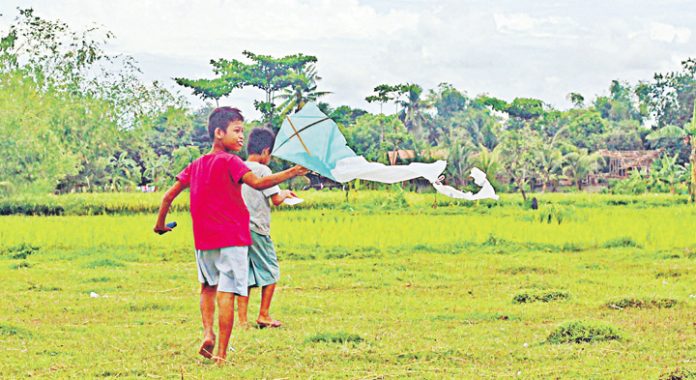Charles R. Pepito (BusinessMirror)

THE Central Visayas Regional Development Council (RDC) has approved the Regional Development Plan for 2017-2022 in a special meeting held recently in Cebu City.
The meeting was presided by National Economic and Development Authority-7 Director Efren Carreon.
During the meeting, RDC Secretary and Neda-7 Assistant Regional Director Dionisio Ledres Jr. presented before the body an assessment of the region’s performance in terms of gross regional domestic product (GRDP), employment and underemployment, income gap and poverty incidence.
Ledres said that, although the region was not able to meet the targets on the growth of the GRDP in the last two years, the region still recorded a respectable average annual GRDP growth rate of 7.2 percent for the past six years.
Employment targets were met while for poverty reduction, poverty-incidence targets were not met, and there was only minimal decrease in the income gap. Ledres explained the development challenges and opportunities in the region included poverty, despite the high economic growth, vulnerability to disasters, congestion in Metro Cebu investor interest to locate in the region, ongoing and pipelined infrastructure projects, strategic location of the region and the Asean economic integration.
The strategic framework of the plan, adopted from the Philippine Development Plan 2017-2022, has three pillars: Malasakit, which focuses on enhancing the social fabric; Pagbabago, which targets to reduce inequality; and Kaunlaran, which aims to increase potential growth.
For the next six years, the region targets to have a 7.5-percent to 8-percent GRDP growth, a 93-percent average annual employment rate, and a 21.7-percent poverty incidence rate at the end of the plan period.
Ledres then explained the growth drivers of the region. These are travel and tourism, information technology and business-process management (IT-BPM) and related services, public and private construction, and manufacturing resurgence.
For the travel industry, the Mactan Cebu International Airport (MCIA) will be a major international gateway. Several new direct flights to international destinations were already established. Upon completion and operation of the new passenger terminal building of MCIA by mid-2018, the MCIA can accommodate 12 million passengers annually. The New Bohol International Airport and the Siquijor Airport Improvement Project would also pave the way for growth in tourist arrivals in the region.
Other initiatives to be pursued for the improvement of sea travel are improvement of roll-on, roll-off (Roro) ports; construction of a cruise-ship terminal in Bohol; establishment of online booking system of shipping lines; and harmonization and integration of port fees in boat tickets.
Ledres said with these facilities, the promotion and development of new tourist destinations shall be intensified.
For manufacturing, the development and promotion of industrial estates and economic zones; new investments in shipbuilding allied industries; and promotion of agri-processing industry shall be pursued.
Ledres said the operationalization of the New Cebu International Container Port will be a boon to the manufacturing industry in the region. For the IT-BPM industry, expanding economic opportunities in services shall be done through sustaining the growth of the IT-BPM industry by moving toward nonvoice services, like software design.
The region shall also support the development of the New Bohol Business Park at the existing site of the Tagbilaran Airport.
For agriculture and fisheries, expanding economic opportunities in agriculture shall be done through pursuing industry clustering; supporting the development of fiber crops; rice and high-value crop production; and livestock development.
Efforts shall also be made for research and development, infrastructure, machinery, postharvest financing, and crop and livestock insurance support.
Under infrastructure development, Ledres cited the major proposed infrastructure projects in the region. These included roads and bridges, railways, power-transmission projects, water supply, solid-waste management, airports and sea ports.
Ledres said the crosscutting interventions that shall be implemented, namely, investment in human capital; investment in science, technology and innovation; governance reforms; ensuring livable and resilient communities; ensuring peace and order; and ensuring ecological integrity.
Gordon Alan Joseph, executive committee chairman for research, program and organizational development of the Metro Cebu Development Coordinating Board (MCDCB), noted that under the Roadmap Study for Sustainable Urban Development in Metro Cebu, there are six bypass projects and three rail projects that they would like to be implemented in Metro Cebu.
The bypass projects include the Carcar Bypass, Basak-Banilad Road, Plaridel-Cansaga Road, V. Rama-Gorordo Bypass, Parallel Road to H. Cortes Avenue and Naga-Lahug Bypass. The rail projects include the Manila Metro Rail Transit System (MRT) North Line, MRT Central Line and MRT South Line.
Carreon instructed that the RDC Infrastructure Development Committee to include on the agenda of its succeeding meetings proposals on the conduct of feasibility study for the unfunded bypasses and mass rail-transit projects under the Roadmap Study for Sustainable Urban Development in Metro Cebu.
Carreon acknowledged the inputs from the national government agencies and the assistance from the governors of the three provinces in the region for the conduct of the provincial consultations for the RDP.
The RDP would be subjected to an annual assessment to review and update the development targets in the region.
